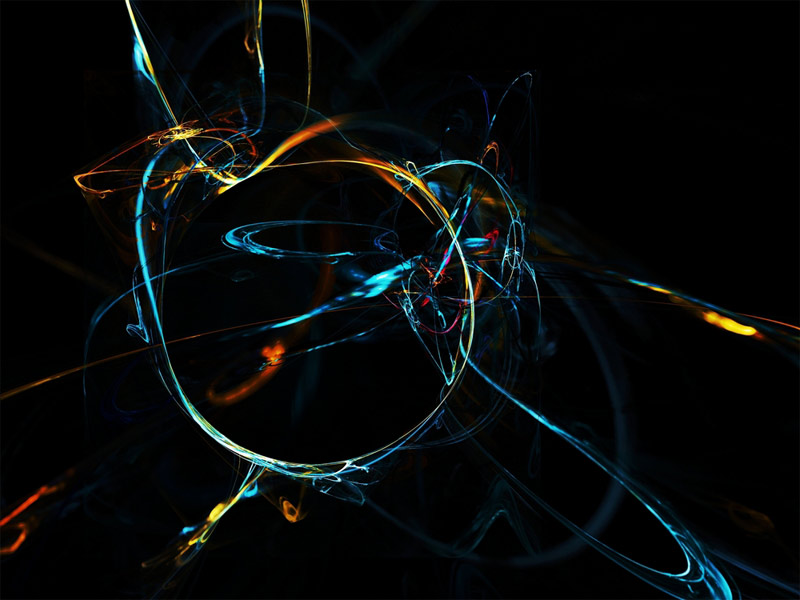Turning Light into Matter May Soon Be Possible

Scientists may soon create matter entirely from light, using technology that is already available to complete a quest 80 years in the making.
The experiment would re-create events that were critical in the first 100 seconds of the universe and that are also expected to happen in gamma-ray bursts, the most powerful explosions in the cosmos and one of the greatest unsolved mysteries in physics, researchers added.
As Einstein's famous equation E=mc2 proved, mass can get converted into energy and vice versa. For instance, when an electron meets its antimatter counterpart, a positron, they annihilate each other, releasing photons, the particles making up light.
In 1934, physicists Gregory Breit and John Wheeler revealed that it should be possible to smash together pairs of gamma rays, the most energetic form of light, to generate pairs of electrons and positrons — the simplest method of turning light into matter ever predicted. However, Breit and Wheeler said they never actually expected anyone to demonstrate their prediction. [The 9 Biggest Unsolved Mysteries in Physics]
![Researchers say that soon it will be possible to smash photons together to create matter in the laboratory. [See full infographic]](https://cdn.mos.cms.futurecdn.net/uWmph5iedyGFT4Ux2myTfS.jpg)
"The problem is that it is difficult to generate dense and narrow gamma-ray beams of the energies required to see the process" of light turning into matter, said lead study author Oliver Pike, a theoretical physicist at Imperial College London. "Also, if you use a two-beam approach, even if you could produce electrons and positrons, they would fly off in all manner of directions."
Making matter
Past experiments have transformed light into matter, but all these required the additional presence of massive, high-energy particles, or required more than seven photons to create a pair of electrons and positrons, "clearly a more complex process," Pike said.
Sign up for the Live Science daily newsletter now
Get the world’s most fascinating discoveries delivered straight to your inbox.
Now scientists investigating unrelated problems in nuclear fusion have worked out a relatively simple way to prove Breit and Wheeler's predictions and convert pure light to matter.
"Performing this experiment would verify a piece of fundamental physics and demonstrate a very simple process seen throughout high-energy astrophysics," Pike told Live Science.
Pike and his colleagues were investigating a form of nuclear fusion involving a technique known as inertial confinement, where fuel pellets are compressed at very high temperatures and pressures to force the hydrogen atomsinside to fuse. This strategy involves a tiny gold pipe called a hohlraum, which is German for "empty room."
"Very high-energy laser beams first strike the inside surface of the gold hohlraum, causing it to re-emit X-rays," Pike said. "These then blast away the plastic capsule of the pellet and implode the hydrogen inside."
The scientists were looking for applications of hohlraums outside their traditional role in fusion energy research. After a few hours of research in a tiny lab office, "we were astonished to find they provided the perfect conditions for creating a photon collider," Pike said.
Photon-colliding experiment
The experiment they proposed involves two key stages. In the first stage, scientists would use an extremely powerful high-intensity laser to excite electrons to just below the speed of light. These electrons would then get fired at a slab of gold, blasting out a beam of gamma rays packing a billion times more energy than visible light. [10 Implications of Faster-than-Light Travel]
The next stage of the experiment involves a hohlraum, a tiny gold can. Researchers would fire a high-energy laser at the inner surface of this gold can so that it glows hot with X-rays.
"The technology simply didn't exist for us to create light like this in 1934," Pike said. "I think it's amazing that it's possible to create a photon collider using lasers that exist today."
Investigators would fire the beam of gamma rays from the first stage of the experiment into one end of the hohlraum right through its center. The light from both sources would smash together in this "photon-photon collider" and generate electrons and positrons. These newly made particles would not scatter off in motley directions as they would with a two-beam approach — instead, they'd zip out the other end of the hohlraum in a beam, "making them much easier to detect," Pike said.
The scientists are now talking with other research groups to perform the experiment.
"As our scheme can be implemented straightforwardly at various laser facilities, we are hopeful that this will happen very soon," Pike said. "Further into the future, it may possible to create other particles with this kind of photon collider, but we will have to wait for lasers to be more powerful first."
The scientists detailed their findings online Sunday (May 18) in the journal Nature Photonics.
Follow Live Science @livescience, Facebook& Google+. Original article on Live Science.










